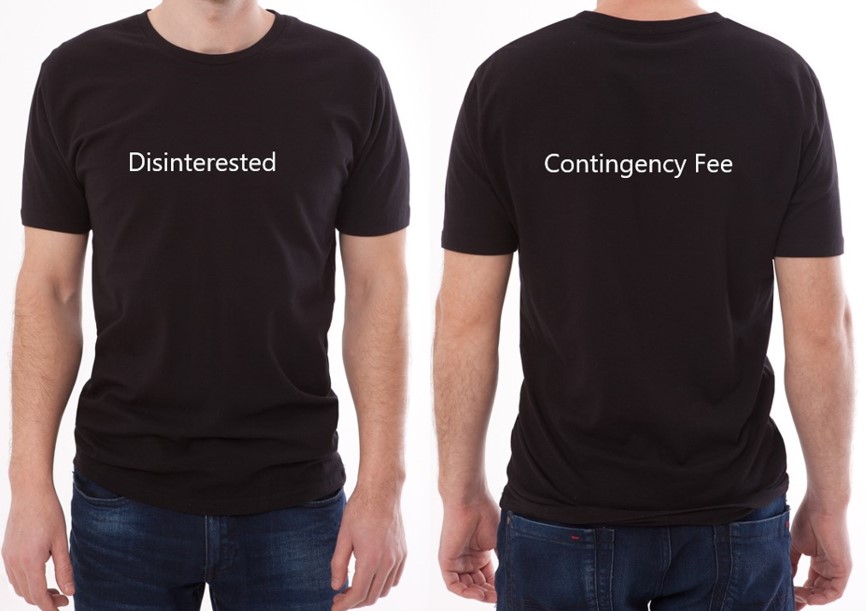To determine whether the appraisal award must apportion items line by line, the appraisal panel should first read the policy. The panel should also consider state law on the issue. The answer to the title’s question is… “It depends on policy language and state law.”
Bill Cook commented in Can the Appraisal Award Be Challenged Because the Appraisers Used Wrong Methods to Arrive at the Award? noting that the standard appraisal language does not require the appraisers to detail a line-by-line apportion of damage.
A Florida case supporting Cook’s position1 found an insurer arguing that the court must require the appraisal panel to list the values “to each item.” This was the insurer’s exact argument in briefing:
The Court stated:
[T]he Policy requires only that an itemized award be issued that states separately actual cash value and loss.Paraphrased correctly, the Court should have stated:
[T]he Policy requires only that an itemized award be issued that states separately actual cash value and loss to each item.Although the Court may be convinced that one roof can be an item, eleven roofs cannot reasonably be read to be one ‘item’ in context of the appraisal provision and the Policy. Moreover, the itemization requested is that which Florida Gaming actually submitted….
The Court’s omission of these three crucial words, ‘to each item,’ in its discussion demonstrates the misinterpretation of the itemization requirement of the Appraisal provision of the Policy. The purpose of appraisal expressed in the Policy, which is to determine the actual cash value or loss as to each item that Florida Gaming claimed was damaged, has been rendered meaningless by this Court’s denial of the Second Motion to Compel Compliance with the Appraisal Order and Policy.
The federal court harshly ruled against the insurer, finding that the policy did not require specific itemization “to each item” rather than a category of loss previously ordered:
Defendant chides the Court for its omission of the words ‘to each item’ from the quoted Policy language; however, the language was not omitted.
Judging from Defendant’s argument, it appears that it is Defendant who has misapprehended its own insurance policy. As the Court stated in the March 19 Order, the Policy requires that the appraiser itemize and state separately the amount of actual cash value and loss as to each item. The Appraisal Form reflects that the appraisers indeed did categorize each item, and the actual cash value and loss with respect to each item so categorized, before establishing a total loss amount. Yet, Defendants contend there should have been a greater level of detail with respect to the itemization. The Policy, however, is devoid of any discussion or language supporting Defendant’s contention. Moreover, when interpreting insurance contracts, Florida courts may consult references commonly relied upon to supply the accepted meanings of words…. As is evident from the definition, how an ‘item’ is defined in each circumstance will depend on how the relevant list breaks itself down into component parts. In other words, it is only once a list is formed that each of the components will become an ‘item’ in reference to the list. The key to itemization appears to be that some reasonable listing of components must be generated so as to create separate items. In the instant case, the Court found that the Appraisal Award Form complies with the Policy’s mandate, as there is a listing, reasonably broken down into component items, which states the actual cash value and loss for each item and is unpersuaded that she erred in reaching that conclusion.
Defendant then argues that the Court ‘misapplied the law regarding contract application.’ Specifically, Defendant argues that the Court failed to interpret the Policy according to its plain language, for it claims that the Policy language is unambiguous. However, in the March 19 Order, the Court applied the plain language of the Policy, which requires only that the appraisal award be itemized and state separately the amount of actual cash value and loss, which the Appraisal Award Form did. The Court broached the subject of the Policy’s potential ambiguity merely to remind Defendant that were Defendant to argue that the Policy is ambiguous, the Court would be forced to construe any such ambiguity against Defendant as the drafter of the Policy.
Certain categories related to coverages and types of loss need to be listed. This ensures that limits and deductibles can be applied appropriately.
Thought For The Day
There is no magic in magic, it’s all in the details.
—Walt Disney





